
Sadly, the same color is not what is being used on the tubing. Here it is more of a dirty gray rather than anything we would consider to be ‘white’. This issue stems from the fact that the white braiding covering the black tubing is not thick enough. Instead of multiple layers, it is one layer of stretch braiding ‘thick’. Still more than good enough to protect against abrasions, but the combination results in a less than perfect visual effect. Hopefully future white generations of Cooler Master MasterLiquid AIOs will fix this issue.

Also on the less than optimal side of the equation, Cooler Master is using rather thin tubing. To be precise it is using what is typically called ‘3/8ths’ tubing. Meaning it has an Inner Diameter of (about) 3/8ths of an inch and an outer diameter of about 7/16ths. Of course, Cooler Master is (obviously) using metric equivalents so its more precise to say it is 11(ish)mm OD, 8mm(ish)ID tubing…ish. Lots of ‘ish’… as AIOs are not meant to be retubed and usually use non-standard / “not off the shelf” tubing or connectors. In either case, this is decent tubing that should have enough inner diameter width to keep static pressure levels in check.
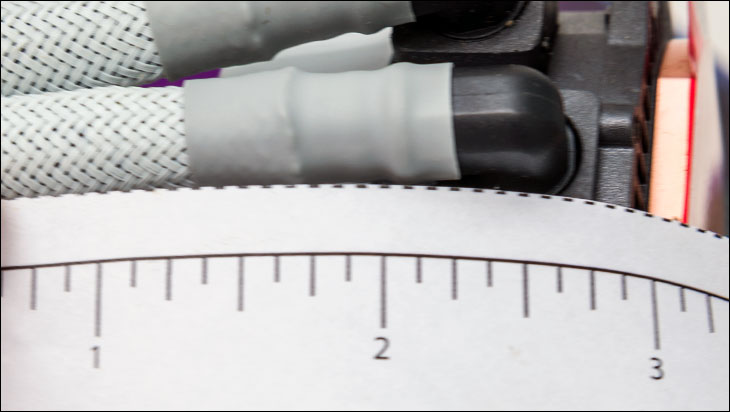
On the truly positive side they do give you a decent ~12-inch length to said tubes. Which does come in handy in bigger cases.
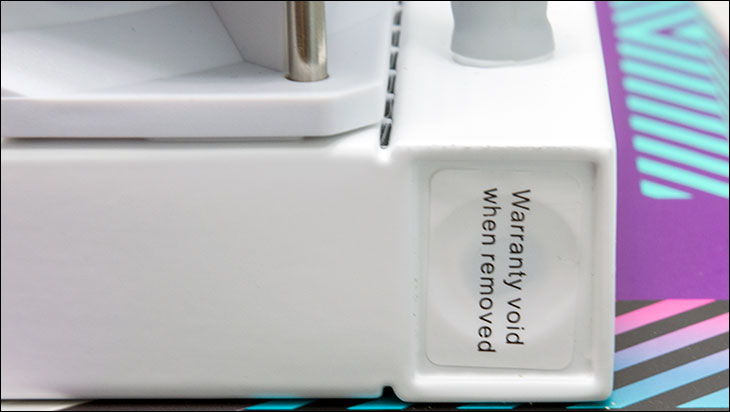
Circling back to the radiator. It is a three-port rad. Not a two-port. However, unlike say Asetek radiators which have the third fill port along side the other two, this radiator’s third port is located on the side of the rad reservoir and is hidden by a ‘warranty void’ white sticker. This is one of the most rational, and best implemented configurations we have seen to date on an AIO… as you still have the option of adding in a secondary radiator (or reservoir) or even a ‘burper tube’ for refilling the rad in the years to come, but it is hidden away and not a visual eye sore. Color us impressed.
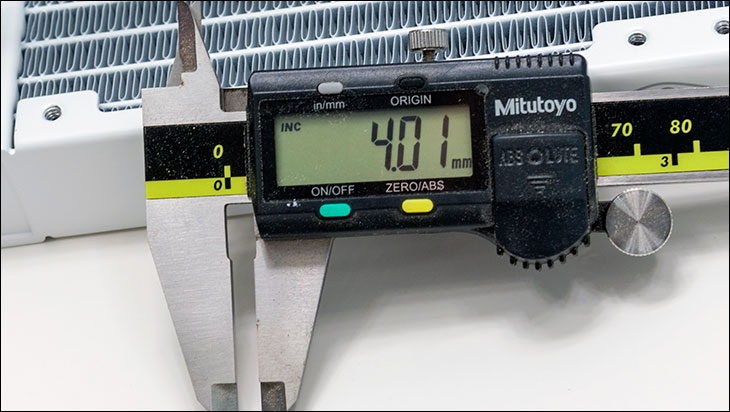
This rad features dual integrated fan shrouds to reduce static pressure and the fans’ dead zone(s). Since these offsets are 4mm ‘tall’ that means the radiator channels (and fin array) are a nominal 19mm. Which is typical for modern ‘thin’ radiators. Overall, we like this radiator and think it is pretty good… even if Cooler Master did opt for some rather misleading info-graphics on its product page.
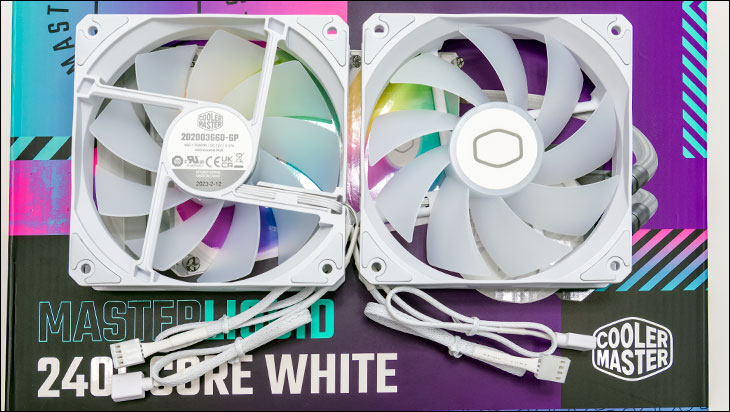
This brings us the fans. In some ways they are the Achilles Heel of the L Core series. In others, they are decent for its price class. Once again, the L Core is all about core values and offering as much performance, and style, as they can without turning it into a higher MSRP’ed AIO. With this caveat in mind the easiest way to describe these ‘new’ fans are to say that they are basically slightly improved SickleFlow 120s that shipped with the older V2. So, if you are expecting to find those sweet, sweet Mobius 120 fans… you are going to be rather disappointed.
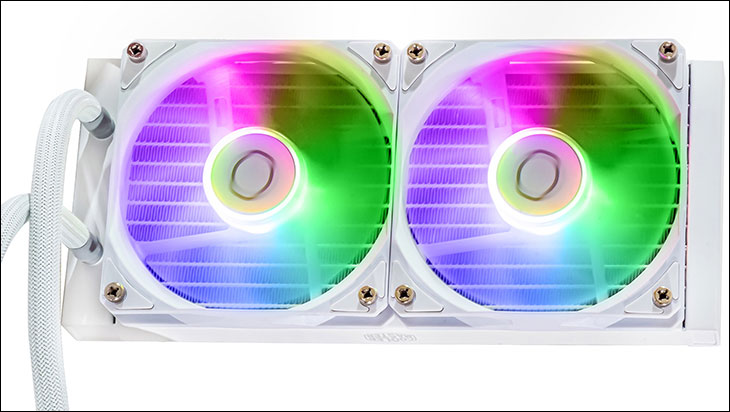
To be precise one should expect to find two square frame, all white chassis, fans that make use of LEDs integrated directly into their hub. Mix in some improved geometry (over their predecessors) in the semi-translucent (“Frosted”) white blades, with slightly improved Rifle Bearings and you have the new fans in a nutshell. We do not have all that much issue with these fans. Rifle Bearings are better than standard sleeved. They are much, much better than poorly designed (aka choke full of Chinesium) Fluid Dynamic Bearing based fans that most in this price range use. They just are not Mobius 120s with their advanced Hydro Bearings, advanced blade ring, and advanced LED glow rings in the chassis design. As such, they are noticeably inferior to what Cooler Masters latest premium models come with.

Compounding this annoyance, the abilities of these fans is best described as ‘good enough’ for their class. 1750 RPMs with 1.86mm static pressure is a little anemic by modern standards and Cooler Master really need to bump up their SickleFlow design to 2mm static pressure @ 1800rpm… or better yet 2K and 3mm of static pressure. After all, when dealing with as large production runs as Cooler Master does the difference in price between a good enough fan and a great fan is maybe a dollar or two. As such, if a budget allows for it, we probably would swap them out for all Arctic P12s… and fully embrace the ‘two-tone’ aesthetics of this AIO. If not, they are good enough with good enough performance, good enough noise profile, and more than good enough longevity. They just are a victim of Cooler Master’s Mobius 120 series’ success.

Overall, the Cooler Master MasterLiquid 240L Core is a solidly built unit. One that has numerous little features that put the ‘extra’ in extraordinary… for its class. Enough extras that it can easily punch above its price class and compete with more expensive options already on the marketplace. Just the way things should be.








